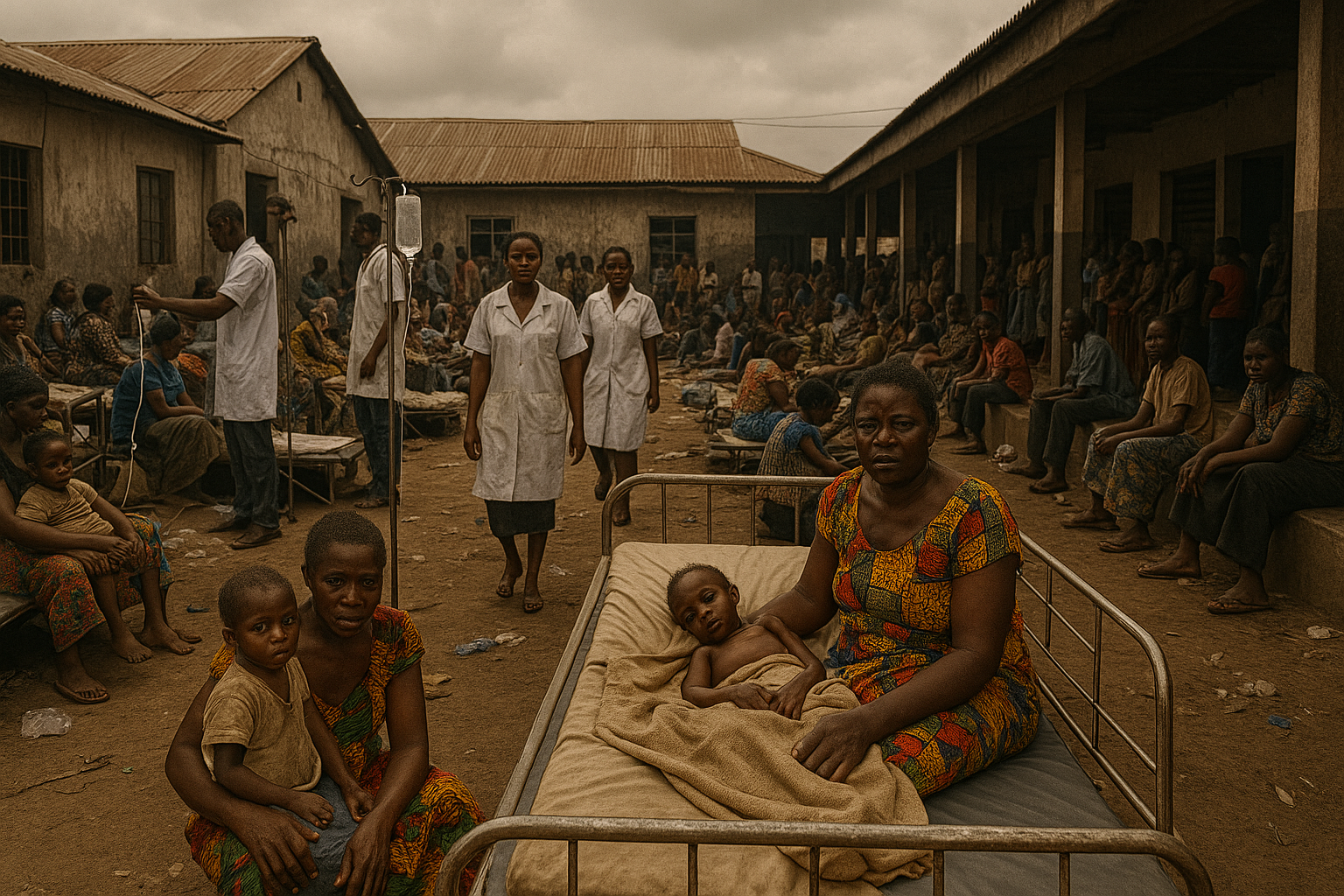From Plans to Pitfalls: Why DRC’s Health Budget Isn’t Reaching Its People
A World Bank and WHO study reveals that despite policy efforts, the Democratic Republic of Congo’s health budget is poorly executed, with most spending limited to salaries and essential services underfunded. Systemic issues like centralization, fragmented donor flows, and weak procurement continue to undermine progress toward Universal Health Coverage.

A groundbreaking study by the World Bank and the World Health Organization (WHO), with support from the Global Financing Facility, reveals how the Democratic Republic of Congo’s (DRC) quest for Universal Health Coverage (UHC) is being derailed by systemic weaknesses in public financial management. Authored by Marion Jane Cros, Fatima El Kadiri El Yamani, Michel Muvudi, and Aminata TOU Nana, the report titled “Budget Execution in Health: From Bottlenecks to Solutions” dissects how poor budget execution has left the health system underfunded and vulnerable. Despite progressive policy frameworks like the 2019–2022 National Health Development Plan and a national Health Financing Strategy, the health sector in DRC is still overwhelmingly funded by households and donors. Between 2016 and 2021, over 80 percent of total health expenditure came from these two sources, while the government contributed a mere 10 to 16 percent, a level far below the 15 percent threshold recommended by the Abuja Declaration. With only 3.65 percent of GDP spent on health in 2020, the nation’s investment in health remains insufficient to meet UHC targets.
More Money Planned Than Spent
At the core of the problem lies a deep disconnect between what is budgeted and what is actually executed. From 2016 to 2020, only 47.6 percent of the health sector budget was implemented based on initial allocations. Even when judged against revised budgets, execution rates improved only slightly to 68 percent, still considerably lower than the 80 percent execution rate for overall government spending. Salaries, particularly for health workers, dominate the executed portion of the budget and are often over-executed, reaching 103 percent on average. However, other spending areas, such as capital investments, hospital support, and provincial transfers, are consistently underfunded. In fact, less than 5 percent of transfers to provinces were executed during the review period. Even hospitals received less than 20 percent of their allocated funds. Capital expenditures saw an average execution of only 19 percent from domestic funds and 38 percent from external donors. Such skewed prioritization highlights the budget’s failure to reflect the actual needs of the health system.
Centralized Control, Fragmented Flows
The study underscores how the centralization of financial authority is stifling the health sector’s ability to function efficiently. Although the Congolese constitution designates healthcare as a provincial responsibility, in practice, nearly all decision-making and financial control remain with the central government. This includes payment of salaries, procurement, and allocation of capital budgets. While program-based budgeting was introduced in 2016 to align budget planning with strategic priorities, its implementation remains largely symbolic. Actual spending decisions continue to be disconnected from the planning frameworks they are supposed to support. Donor funds, which make up a significant portion of the sector’s finances, are only partially captured in the national budget. Many of these resources flow through off-budget channels or are filtered through various layers of central and provincial institutions, resulting in fragmented and opaque financial flows. The inconsistencies make it difficult to assess how much is truly being spent, or whether spending aligns with national health priorities.
A System Strangled by Red Tape
The report paints a grim picture of the DRC’s budget execution system, a web of rigid controls, redundant procedures, and chronic delays. Standard procurement and financial controls involve numerous layers of verification and authorization, which slow down the execution process and often result in funds being left unspent. Ironically, these cumbersome procedures have led to widespread reliance on exceptional or emergency spending mechanisms that bypass the very controls they were designed to enforce. In 2019, $6.3 million was spent on vaccines and blood transfusions despite the absence of a corresponding budget line. No formal revisions were made to account for this, illustrating the ad hoc nature of spending. Moreover, payment arrears are poorly monitored and substantial; in 2020 alone, the Ministry of Health accumulated $181 million in unpaid commitments. Suppliers, wary of delayed or incomplete payments, inflate prices by up to 70 percent, driving up costs and compromising service delivery.
Glimmers of Reform, But a Long Road Ahead
Despite the formidable challenges, the report notes a few encouraging signs of reform. The Ministry of Health has established a Department of Administration and Finance that is gradually preparing to take on full responsibility for budget execution, a move that aligns with the 2011 Public Finance Reform Law. A tripartite Health-Budget-Finance Committee has also been set up to monitor budget implementation and propose improvements. Although this committee is not yet fully operational, it represents a step toward better inter-institutional coordination. Program-based budgeting has improved transparency in reporting, even if it has not yet reshaped execution practices. However, the study makes it clear that these measures are still insufficient to overcome entrenched bottlenecks. Unrealistic revenue forecasts, poor cost estimations, minimal stakeholder engagement, and inadequate tracking of external financing continue to undermine progress. Unless these issues are tackled head-on, the country’s UHC ambitions may remain aspirational rather than attainable.
- FIRST PUBLISHED IN:
- Devdiscourse
ALSO READ
Essential to respect sensitivity of family members of deceased passengers, crew and others who died on ground due to plane crash: AAIB.
U.S. Rejects WHO Pandemic Preparedness Pact
Toxic Heat: WHO Report Links Rising Temperatures and Pollution to Health Crises
Oppn will strongly push issue of Justice Shekhar Yadav against whom opposition MPs moved impeachment notice in RS last December: Jairam Ramesh.
Revitalising Delhi's Wholesale Markets: A New Era of Cleanliness and Efficiency










